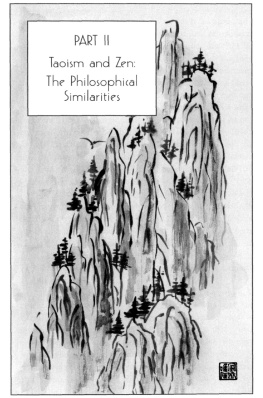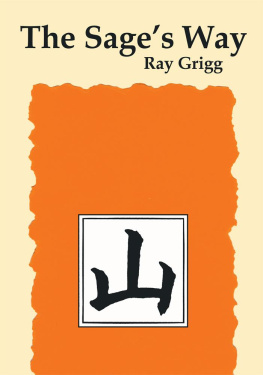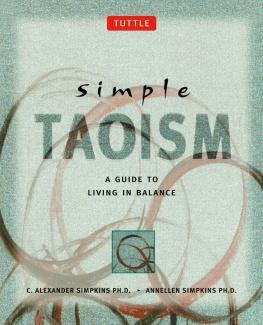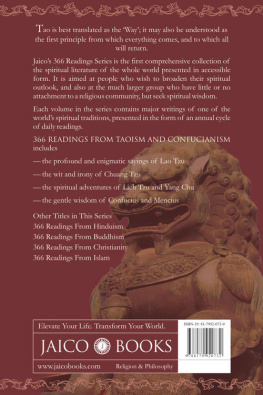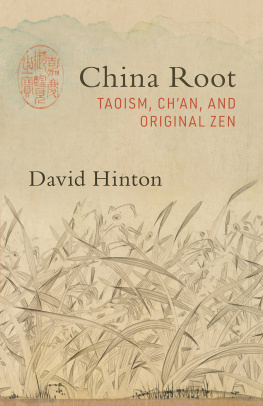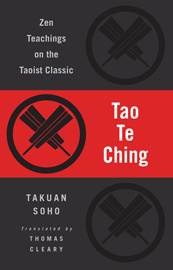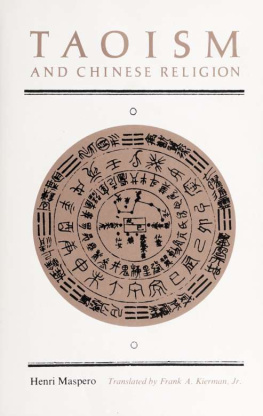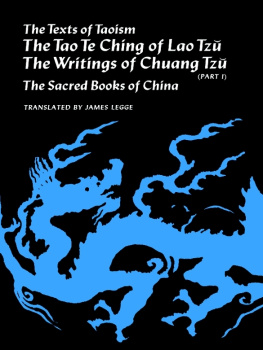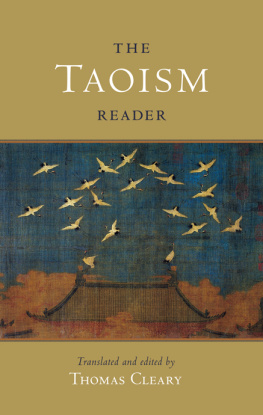

Title

Copyright
Published by Charles E. Tuttle Co., Inc. of Rutland, Vermont and Tokyo, Japan with editorial offices at 364 Innovation Drive, North Clarendon, VT 05759 U.S.A.
1994 Ray Grigg
Illustrations 1994 by William Gaetz
All rights reserved. No part of this publication, including artwork, may be reproduced by any means electronic or mechanical including photocopying, or stored in an information retrieval system without prior permission in writing from Charles E. Tuttle Co., Inc.
Library of Congress Cataloging-in-Publication Data
Grigg, Ray, 1938-
The Tao of Zen/by Ray Grigg.
p. cm. (Tuttle library of enlightenment)
Includes index.
ISBN: 978-1-4629-0745-8 (ebook)
1. Zen BuddhismChina. 2. TaoismChina. I. Title. II. Series
BQ9262.9/C5G75 1994
294.3'927dc20
94-7736
CIP
First Edition
3 5 7 9 10 8 6 4 2
(TP)
Printed in the United States of America
Contents

Part I Introduction
A s the consciousness of the early Chinese moved from superstitious defensiveness to volitional empowerment, what Arthur Waley refers to as the evolution from a "pre-moral" to a "moral" culture, people began to realize that direct action was more effective than religious ritual in influencing events.
In early China this option of personal assertion as a response to unfolding circumstances first appeared in The Book of Changes, the I Ching. Its essential subject was the interplay between a constantly changing world and a self-conscious individual who was seeking options within these shifting circumstances. How was such a person to act within perpetual change and uncertainty, between what is and what will be? The obvious answer was to anticipate the changes by attempting to read the movement of circumstances, and then change them, avoid them, or be prepared for them.
For a culture closely connected to the soil and the rhythms of the seasons, the Chinese became aware that all changes were linked to the ordered change of natural processes. Changes were not random or meaningless; they were bound by the character of the world itself and could be read in the images and rhythms of Nature. Human nature was part of Nature. Together the two rose and fell in patterns and cycles of growth and decay, birth and death. The similarities between inner and outer movement were noticeable and clear.
The I Ching measured these movements so they could be harmonized with each other. But it also measured something else. The insight that defined individual volition became the first conscious separation between inner self and outer circumstances. The spiritual integrity of all being was consequently divided, and the magical wholeness of a solely religious existence was fractured by the effort to control events directly. Attention shifted from passive ritual toward active influence. Although The Book of Changes recorded and then described this newly emerging relationship between the inner and the outer, it did not offer a resolution to the resulting split that now divided the sense of spiritual oneness. A more sophisticated thinking was required to resolve this dichotomy. In the structure of the I Ching and within its underlying assumptions was the resolution.
The tradition that evolved from the I Ching held that two interactive elements influenced events. The first was the great force of circumstances, the universal principle that pervaded everything. This omnipresence was soft and nurturing but it was also hard and unfailing, both an energy of creative generosity and an inflexibility of order that was determined by the integrity of itself. Although immediate and obvious, this principle was also beyond thought and knowing. Because it was beyond words it was simply called the Way, the Tao.
The second element was the virtue-power of individual character, the Te. It could be reached through tso-wang, "sitting with blank mind," by finding "the mind within the mind," or hsin tsung, the still place in the center of consciousness that was somehow connected to the Tao through the oneness of the inner and the outera relationship somewhat like the Atman to the Brahman in Hinduism. When this connection was entered, when the Te became one with the Tao, the result was a synchronistic accord between the inner person and the outer world. Thus people could live harmoniously within the bounds of natural order by becoming one with it. They could be joint partners in the unfolding of circumstances, exerting their influence by taking part in the larger ordering process while remaining compliant to the larger ordering principle. Individual volition could become soft and cooperative, compliant rather than willful. By cultivating inner character, people could influence events but still be in accord with the great order of the Tao. Thus, the inner-outer dichotomy was resolved. This school of thought and practice became known as Taoism.
This original Taoism was known at first as Quietism and later as philosophical or contemplative Taoism to distinguish it from other forms. It was averse to superstition. Based on personal experience rather than belief, it would have no part of organized religion, rituals, and priests. Knowledge and influence came from within, not from institutionalized systems. Although these early Taoists needed solitude, they were not reclusive. They engaged life in order to enter it; the inner and the outer had to remain connected. Individuals were empowered by the character of who they were, by the cultivated interaction of the Te with the Tao.
But what could be the nature of this interaction if the Tao was thought to be a universal principle that was unknowable? Gould a separate self with personal power coexist with the omnipresent Tao? What could be the accord between individual volition and aquiescence to the great principle? What was the resolution between self-consciousness and Tao-consciousness? These crucial questions were at the heart of the dilemma posed by the inner-outer and self-not-self dichotomies. They were answeredin as much as such questions can be answered with wordsin the early thinking of Taoism that eventually coalesced into a book known variously as the Tao Te Ching, the Te Tao Ching, or simply the Lao Tzu.
Taoism is the resolution of the subject-object, active-passive paradox that was invented by self-conscious deliberation. It puts together the wholeness that personal willfulness took apart. In simplest terms this is done by entering the dichotomy and becoming the empty stillness in the center of the paradox. This Taoist strategy then moved through Chinese Ch'an and became the essential strategy of Japanese Zen.
The word for Zen comes from an abbreviation of the Japanese zenna, which comes from the Chinese ch'an, itself a contraction of ch'anna, which, in turn, is from the Sanskrit dhyana, meaning "meditation." In brief, this meditation is a stilling and focusing of consciousness, a process that is like the tso-wang and the
Next page
